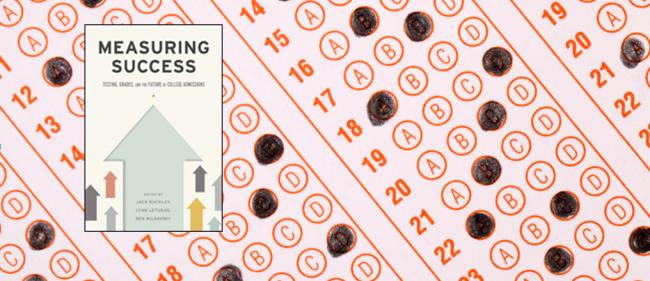You have /5 articles left.
Sign up for a free account or log in.

iStock
Every few weeks, and sometimes several times in a week, another college announces that it will no longer require undergraduate applicants to submit SAT or ACT scores. The National Center for Fair and Open Testing, a leading critic of standardized tests, now counts more than 1,000 four-year colleges that no longer require testing. Defenders of testing point out (correctly) that many colleges on the list are not competitive in admissions. But many are. The list of test-optional colleges now includes half of the top 100 liberal arts colleges, as named by U.S. News & World Report.
A new book seeks to question the test-optional movement, arguing that it is not meeting one of its main goals, which at many colleges has been to increase the diversity of the applicant pool and admitted students. The book is Measuring Success: Testing, Grades and the Future of College Admissions, published by Johns Hopkins University Press.
The co-editors of the volume are Jack Buckley, Lynn Letukas and Ben Wildavsky. All three are respected education researchers who have published widely. Letukas and Wildavsky both currently work at the College Board, she as associate research scientist and he as executive director at the College Board Policy Center. There has been no effort to hide those connections, which are stated in the editor biographies, but some have questioned the project's credibility in light of the College Board ties.
Debates about research with College Board ties are hardly new -- and the book features some chapters by researchers whose findings have been previously released and questioned by some.
For example, one chapter highlights work on grade inflation in high school by Michael Hurwitz of the College Board and Jason Lee of the University of Georgia. Grade inflation is a major part of the argument for the SAT or ACT, with testing proponents saying that grade inflation makes high school grade point averages less trustworthy than in the past. And ditto for class rank, although an additional challenge is that fewer high schools are calculating class rank. Here is an article on the grade inflation research, and a critique of it.
The chapter attracting the most discussion among admissions experts so far is one that argues that test-optional admissions do not actually add to diversity, and could even hurt efforts to diversify. The argument is summarized in an essay published in The Conversation and goes like this: test-optional colleges continue to use the SAT or ACT for students who submit scores, but only those applicants with good scores submit, so average scores go up. This makes colleges more competitive (and they go up in the rankings). Becoming more competitive means that fewer low-income or minority applicants are admitted. These conclusions came from an examination of liberal arts colleges, a type of institution where test-optional policies have been popular.
"This all creates a perverse incentive for colleges to go test optional that has nothing to do with expanding access for students from low-income families," writes one of the researchers, Kelly Ochs Rosinger, assistant professor of education at Pennsylvania State University.
Wildavsky said that the chapters in the book represent "evidence-based, independent research" seeking to address "all sides" of the debate on testing. He said that there is a need, which he hopes the book will serve, for more research and for sharing that research.
Bob Schaeffer, public education director of FairTest: National Center for Fair and Open Testing, said that the book appeared to him to be "self-serving, test-maker propaganda."
Beyond the rhetoric, he pointed to studies that show the success of test-optional policies. A study in 2014, involving 123,000 students at 33 colleges and universities, found "virtually no difference" in the academic success of students who did and did not submit test scores during the admissions process. This study was led by William C. Hiss, who has conducted many previous studies of test-optional policies at Bates College, where he was vice president and dean of admissions. His report was released by the National Association for College Admission Counseling, which has urged colleges to consider whether they need to require testing in admissions.
Many individual colleges that have gone test optional have done research finding that they not only admit students who succeed, but that the student body becomes more diverse, Schaeffer said. One he pointed to, conducted by Ithaca College, looked at the impact on demographics. The study found that, after dropping a test requirement, the college saw an increase in applications of 23 percent for minority students and 10 percent for nonminority students.
And while 28 percent of applicants didn't submit scores, 40 percent of minority students opted not to submit scores. These studies, Schaeffer said, tell the real story of test-optional policies.




